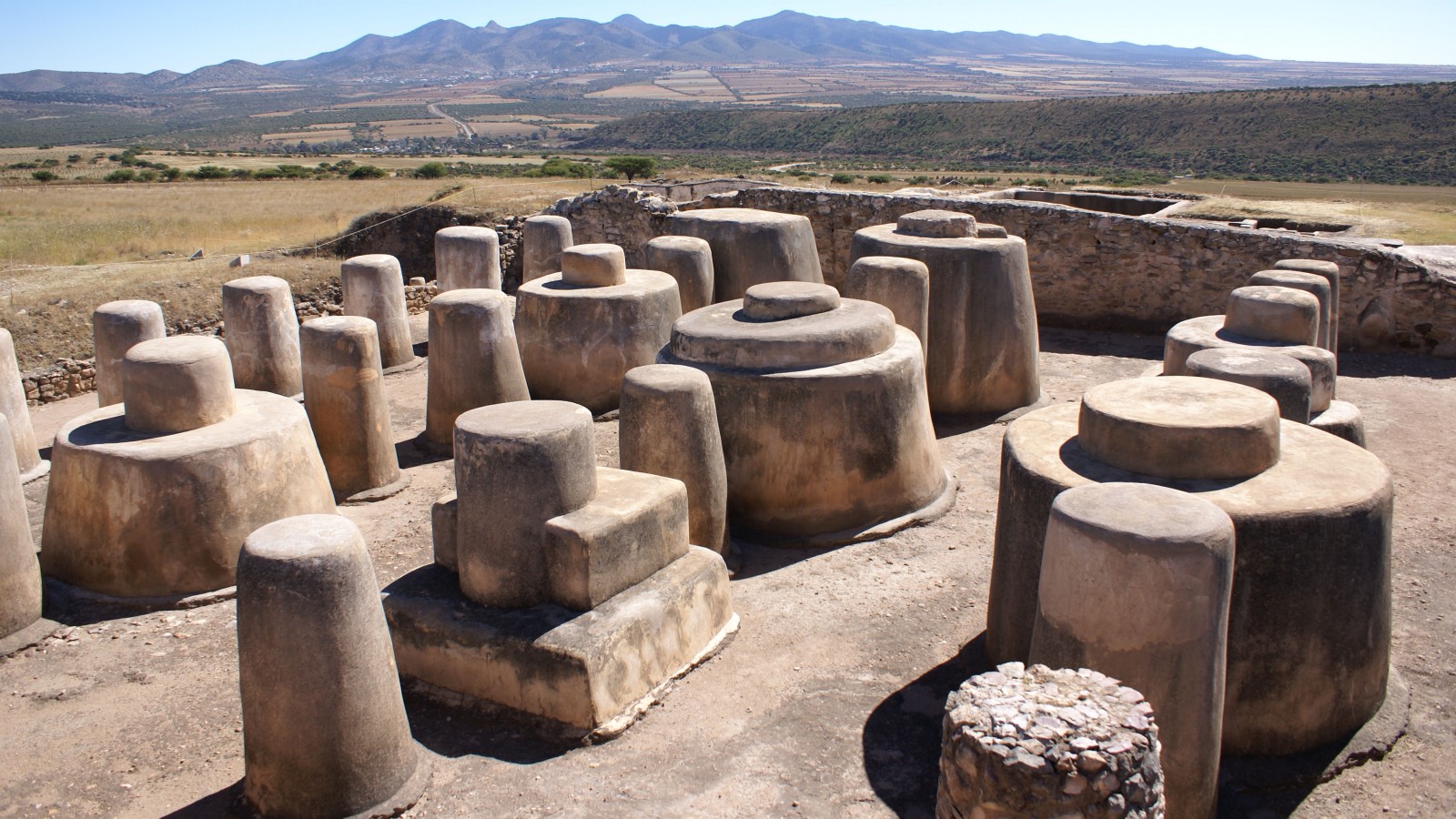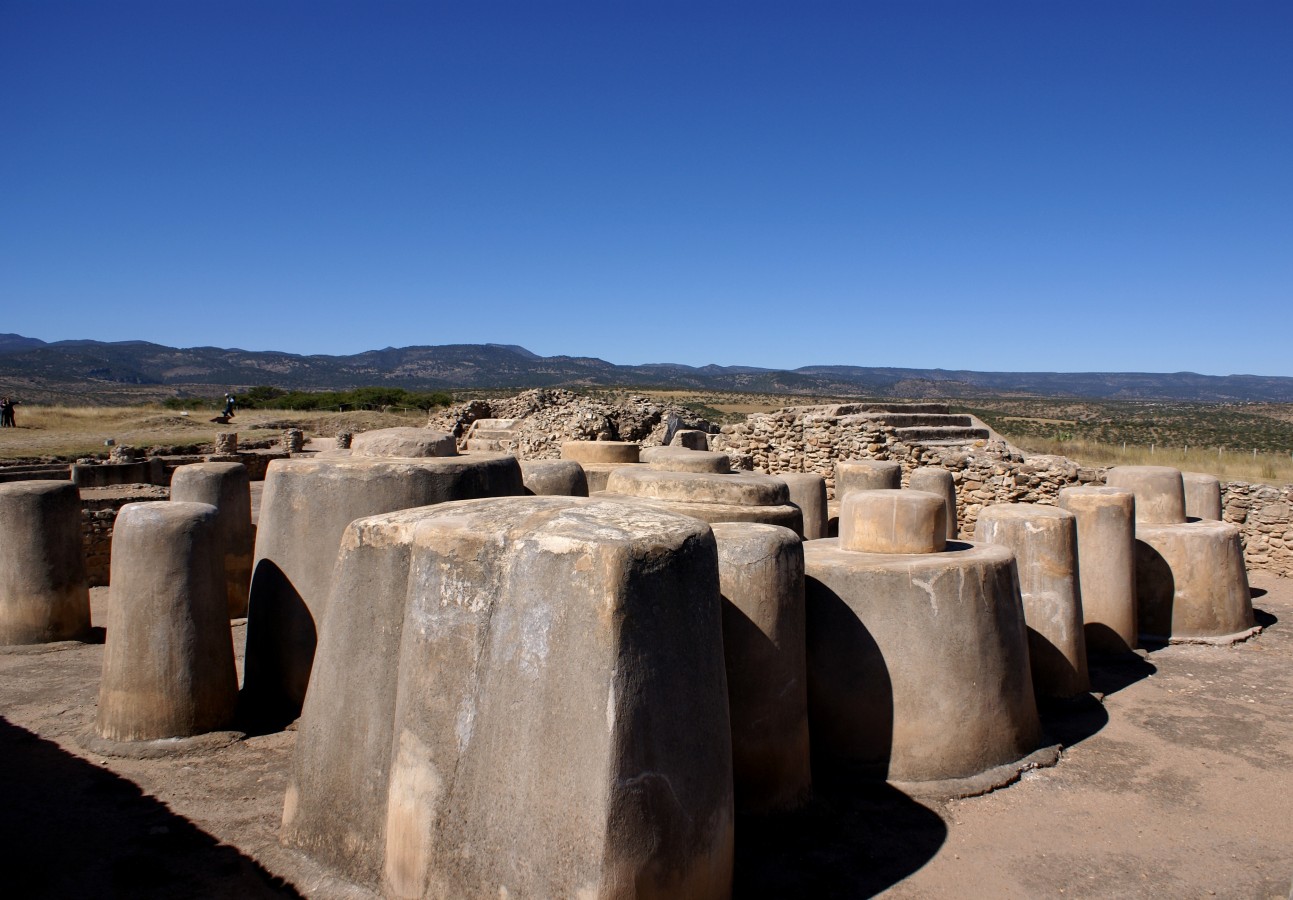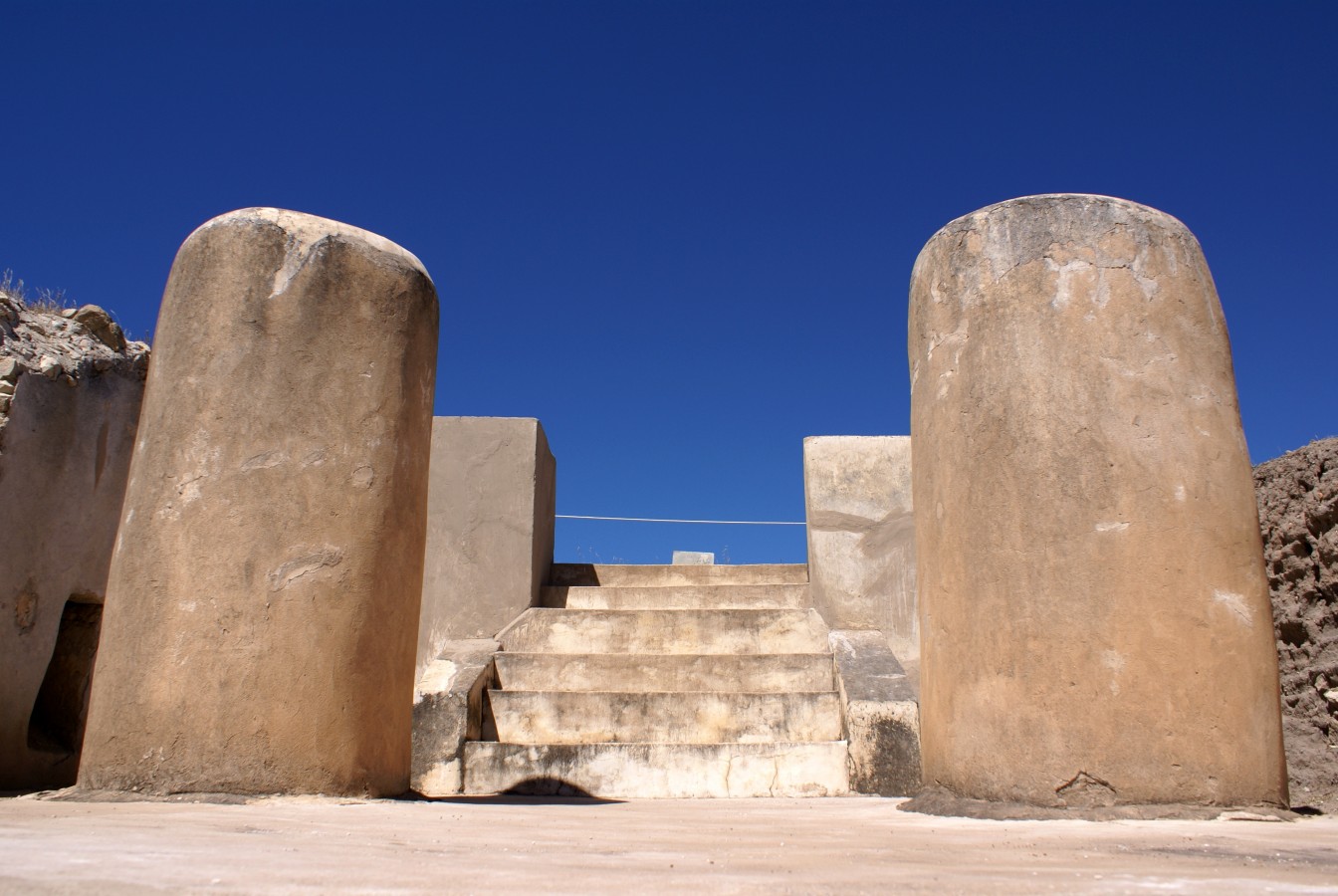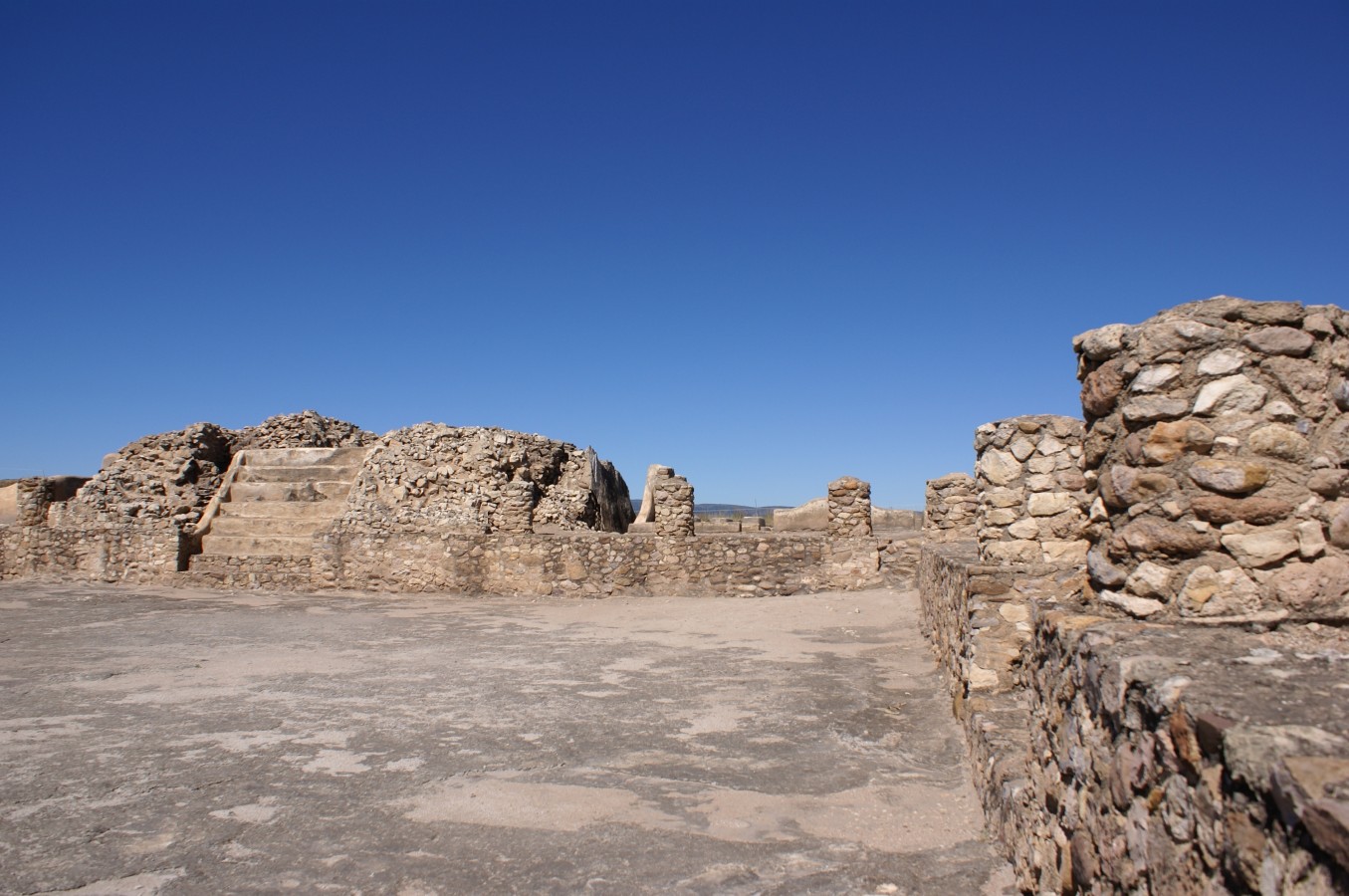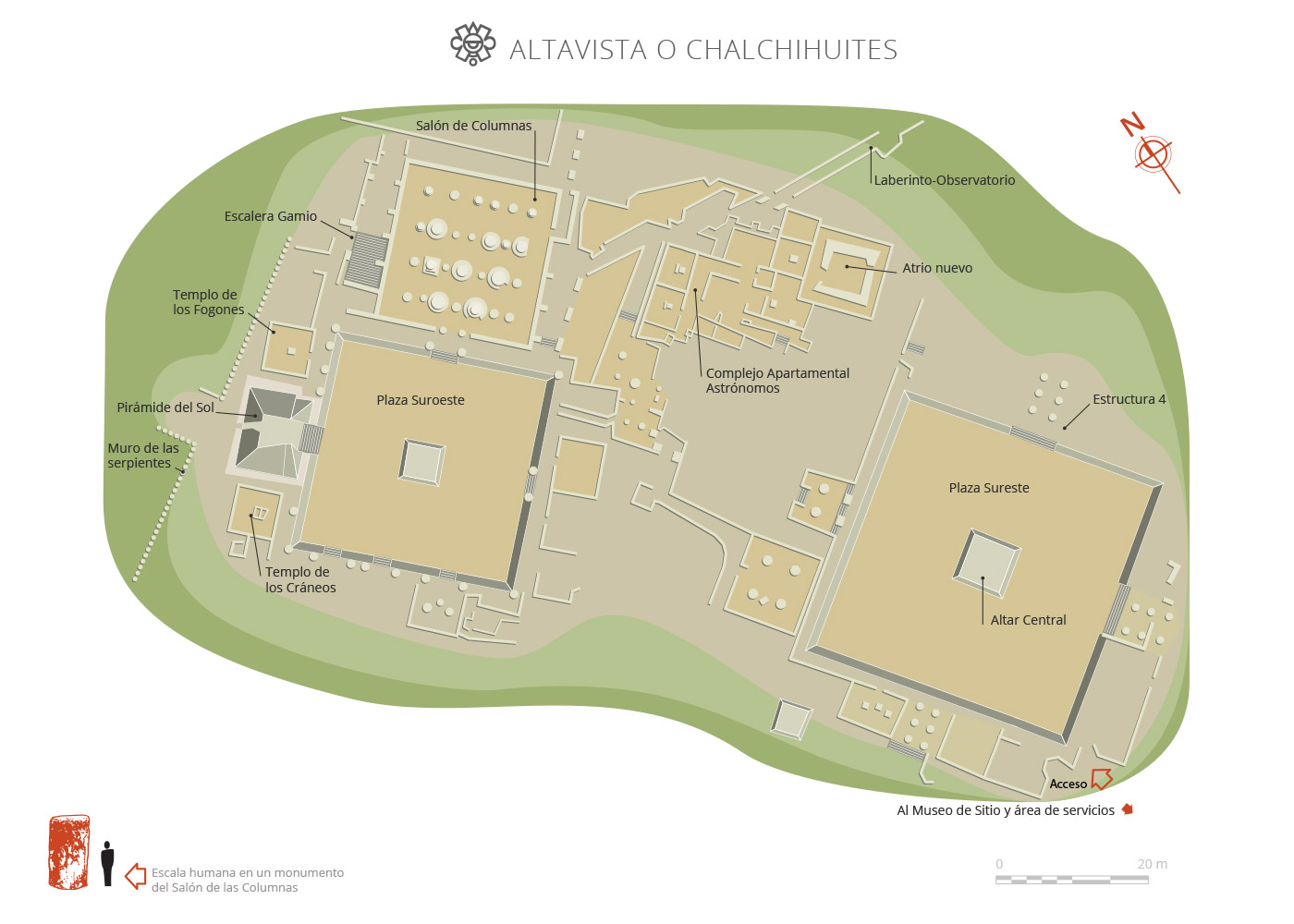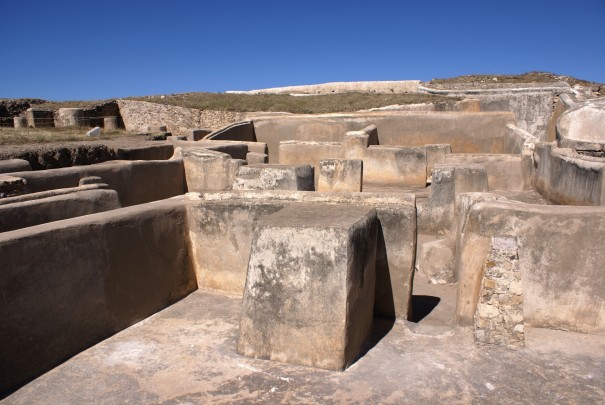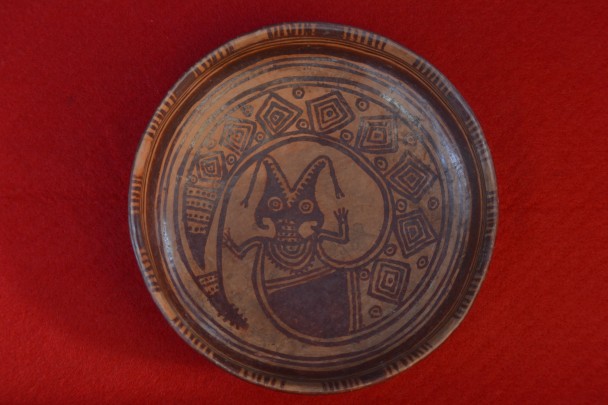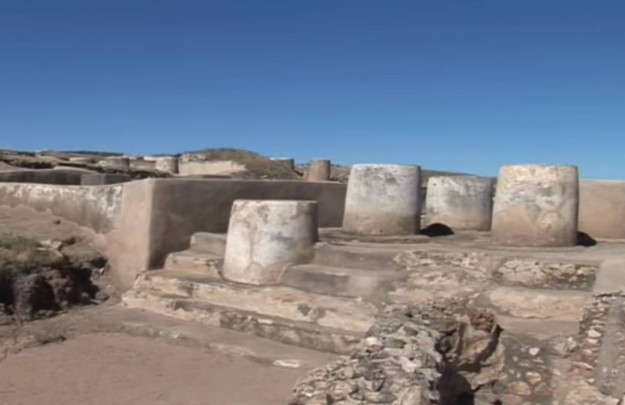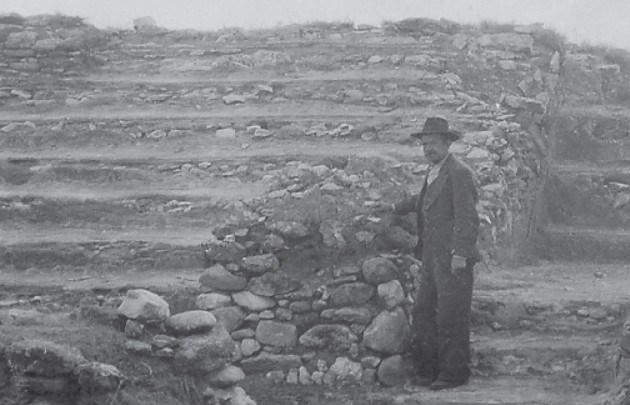Alta Vista (Chalchihuites)
One of the most important ceremonial centers of northern Mesoamerica. Its orientation allows for the observation of the Sun’s yearly movement and, like Chichen Itza, it attracts visitors at the time of the spring equinox.
About the site
Alta Vista was the most important ceremonial center in the early period of the Chalchihuites culture (200-900/950 AD). It was founded between the years 400 and 450 by priests linked to Teotihuacan, and reached its full splendor in the years 700-750. The research carried out at the site reveals that it was perfectly designed, starting with its proximity to the Tropic of Cancer, which demonstrates its significance and uniqueness.
The ancient settlers of Alta Vista used the Chalchihuites mountain range as a calendar on the eastern horizon, which they used to observe the annual shift of the Sun, allowing them to anticipate seasonal changes which were very important for the farming cycle. The city’s monuments were designed not only to record the sunrise but also the Sun’s movement across the sky and sunsets. The corners of the main plazas and buildings projected outwards, in the direction of the four cardinal points, and their alignment with the Sun and the North Star indicate that Alta Vista was set up as a site of worship dedicated to the Sun and the four directions of the universe.
In addition to the site’s astronomical significance, mining activity was also very important. Approximately 800 pre-Hispanic mines are recorded, used by the Chalchihuites culture over a period of around 600 years.
This ceremonial center was abandoned between the years 850 and 900, following a considerable growth in human sacrifices.
Alta Vista was discovered in 1908 by the then archeology student, Manuel Gamio, who, after registering the site, began excavations there, mainly in what now is called the Salón de las Columnas ("Hall of Columns"). These events were published on October 25, 1908, by the Mexico City newspaper “El Imparcial.” However, due to a lack of excavation permits, the work was suspended and a guard was assigned to look after the site. Despite this, during the years that followed, the remains suffered from extensive damage.
In the 1920s, the archeologist Eduardo Noguera and the head of the Archeology Department of the Ministry for Public Education, José Reygadas Vértiz, carried out a survey of Alta Vista and performed consolidation work on the original stucco of the walls and columns. In 1930, the archeologist Agustín García Vega cleared away the vegetation and designed a roof to protect the Hall of Columns. Several years later the US anthropologist John Alden Mason visited the site as part of a research project, the results of which led to the first definition of the Chalchihuites culture. Román Piña Chan, from the INAH, and John Graham, from the University of Southern Illinois in Carbondale, dug test pits in the site's southwestern plaza in 1958.
After having made various discoveries in the region, J. Charles Kelley and a team of researchers from the University of Southern Illinois began excavations in the site during 1971, and consolidated various spaces. Subsequently, this same team carried out periods of work during 1974, 1975 and 1976. In the following years, their work continued together with archeologists from the INAH Zacatecas Center, resulting in increased research in the site’s interior and repairs to the damaged monuments. Since 1994 and to date, the archeologist Baudelina L. García Uranga, from the INAH Zacatecas Center, has continued the maintenance works at the site.
The ancient settlers of Alta Vista used the Chalchihuites mountain range as a calendar on the eastern horizon, which they used to observe the annual shift of the Sun, allowing them to anticipate seasonal changes which were very important for the farming cycle. The city’s monuments were designed not only to record the sunrise but also the Sun’s movement across the sky and sunsets. The corners of the main plazas and buildings projected outwards, in the direction of the four cardinal points, and their alignment with the Sun and the North Star indicate that Alta Vista was set up as a site of worship dedicated to the Sun and the four directions of the universe.
In addition to the site’s astronomical significance, mining activity was also very important. Approximately 800 pre-Hispanic mines are recorded, used by the Chalchihuites culture over a period of around 600 years.
This ceremonial center was abandoned between the years 850 and 900, following a considerable growth in human sacrifices.
Alta Vista was discovered in 1908 by the then archeology student, Manuel Gamio, who, after registering the site, began excavations there, mainly in what now is called the Salón de las Columnas ("Hall of Columns"). These events were published on October 25, 1908, by the Mexico City newspaper “El Imparcial.” However, due to a lack of excavation permits, the work was suspended and a guard was assigned to look after the site. Despite this, during the years that followed, the remains suffered from extensive damage.
In the 1920s, the archeologist Eduardo Noguera and the head of the Archeology Department of the Ministry for Public Education, José Reygadas Vértiz, carried out a survey of Alta Vista and performed consolidation work on the original stucco of the walls and columns. In 1930, the archeologist Agustín García Vega cleared away the vegetation and designed a roof to protect the Hall of Columns. Several years later the US anthropologist John Alden Mason visited the site as part of a research project, the results of which led to the first definition of the Chalchihuites culture. Román Piña Chan, from the INAH, and John Graham, from the University of Southern Illinois in Carbondale, dug test pits in the site's southwestern plaza in 1958.
After having made various discoveries in the region, J. Charles Kelley and a team of researchers from the University of Southern Illinois began excavations in the site during 1971, and consolidated various spaces. Subsequently, this same team carried out periods of work during 1974, 1975 and 1976. In the following years, their work continued together with archeologists from the INAH Zacatecas Center, resulting in increased research in the site’s interior and repairs to the damaged monuments. Since 1994 and to date, the archeologist Baudelina L. García Uranga, from the INAH Zacatecas Center, has continued the maintenance works at the site.
Map
Did you know...
- The ceremonial center of Alta Vista is a complex architectural site mainly made up of civic and ceremonial structures.
- The visible remains of the buildings were not all built at the same time. There were different periods of both construction and refurbishment.
- Alta Vista was designed based on the surrounding landscape and was established as a site of worship dedicated to the Sun and the four cardinal directions of the universe.
- The city was conceived and built using a precise triangulation in the landscape, based on the Chalchihuites mountains.
An expert point of view

Patricia Monreal Martínez
Centro INAH Zacatecas
Practical information
Thursday to Sunday from 09:00 to 17:00 hrs. Last entry 16:00 hrs.
$75.00 pesos
Se localiza a 229 km al noroeste de Zacatecas, o bien a 170 km al sureste de Durango.
From the city of Zacatecas take Federal Highway 45 for Sombrerete, continue on the state road to Jiménez del Teúl, pass the towns of Chalchihuites and El Refugio, cross the Colorado River and the site is located 1 km ahead.
Services
-
+52 (492) 922 50 85 y 922 04 03
-
This email address is being protected from spambots. You need JavaScript enabled to view it.
Directory
Responsable
Patricia Monreal Martínez
This email address is being protected from spambots. You need JavaScript enabled to view it.
+52 (492) 922 50 85 y 922 04 03

